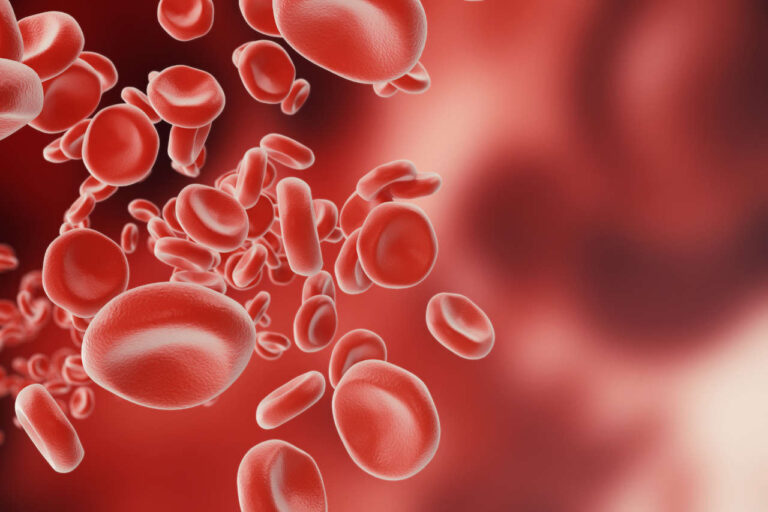
Rheumatoid arthritis and lupus are two autoimmune disorders that affect thousands of people worldwide. While they both affect the joints and share similar symptoms, they also have several differences.
Speak to a Specialist
About Copay AssistanceTo better understand and manage these conditions, you must know the similarities and differences between lupus and rheumatoid arthritis.
In this guide, we will examine rheumatoid arthritis and lupus in more detail. We will examine their symptoms, discuss their causes, and explore their treatments to help you better understand each condition.
Overview
Let’s start with an overview of rheumatoid arthritis and lupus.
Rheumatoid Arthritis
Rheumatoid arthritis (RA) is a chronic autoimmune disorder that occurs when the immune system attacks the lining of joints (synovium) and causes inflammation. The synovium won’t be able to lubricate the joints properly and will cause further damage.
Rheumatoid arthritis involves symmetric stiffness, meaning if the joints in your right hand are affected, the joints in the left hand will also be affected.
Lupus
Lupus is an autoimmune disorder in which the body mistakenly attacks its healthy tissues. Inflammation caused by lupus can spread throughout the body and affect different areas.
Depending on the area affected, lupus can fall into the following categories:
- Systemic Lupus Erythematosus (SLE): This is the most common type of lupus, affecting 7 out of 10 patients and spreading throughout the body.
- Cutaneous Lupus Erythematosus: A broad category that covers different types of lupus affecting the skin.
- Drug-Induced Lupus Erythematosus: A temporary condition triggered by certain medications.
- Neonatal Lupus: A rare condition in which antibodies from a mother with lupus pass to her newborn.
Symptoms of Rheumatoid Arthritis vs. Lupus
Below, we will compare the symptoms of rheumatoid arthritis and lupus.
Symptoms of Rheumatoid Arthritis
The main differences between lupus and rheumatoid arthritis are in their symptoms. Rheumatoid arthritis is often limited to the small joints in the fingers, toes, hands, and feet.
Some patients may notice symptoms in their wrists, elbows, knees, ankles, and other areas.
The primary joint-related signs of RA are:
- Pain
- Stiffness
- Swelling
- Tenderness
Other symptoms include:
- Fever
- Fatigue
- Dry eyes
- Pale skin
- Dry mouth
- Chest pain
- Weight loss
- Joint deformity
- Loss of appetite
- Kidney impairment
- Shortness of breath
- Rheumatoid nodules
- Numbness in the hands and feet
Get Financial Assistance
Symptoms of Lupus
Symptoms of lupus are not limited to joints. While they share similarities such as pain, stiffness, and swelling, lupus has distinct symptoms that distinguish it from RA.
Lupus-specific symptoms include:
- Cough
- Hair loss
- Seizures
- Headache
- Weakness
- Chest pain
- Sun sensitivity
- Dry and itchy eyes
- Memory impairment
- Nausea and vomiting
- Pale or anemic appearance
- Ulcers in the mouth or nose
- Pale or bluish fingers and joints when cold or stressed
- Butterfly-shaped rash (malar rash) over the cheeks and nose
Causes of Rheumatoid Arthritis vs. Lupus
Since both conditions result from the immune system attacking the body, many think there are no differences between the causes of lupus and rheumatoid arthritis.
However, there are subtle variances in what causes lupus and rheumatoid arthritis. Let’s examine them.
Causes of Rheumatoid Arthritis
Doctors don’t yet know the exact cause of RA. However, they suggest several factors may trigger the disease.
Some of these risk factors include:
- Genetics
- Infections
- Hormones
- Physical stress
- Emotional stress
In addition, overweight women between the ages of 40-60 and a family history of RA are more prone to developing this disease.
Causes of Lupus
Similar to RA, the exact cause of lupus is unknown. However, several factors may trigger the development of the disease, particularly in people with a genetic predisposition to it.
The triggering factors for lupus include:
- Infections
- Hormones
- Emotional or physical stress
- Smoking history
- Exposure to sunlight
- Certain medications, such as:
- Antibiotics
- Anti-seizure medications
- Blood pressure medications
- Environmental factors such as air pollution
Additionally, lupus is more common in 15 – 45-year-old African American and Hispanic women.
Get Copay Assistance Now
Diagnosis
To diagnose each condition, doctors begin by examining your medical history. They will ask about your symptoms and conduct the necessary blood tests.
Several differences exist between the diagnostic tests performed for lupus and rheumatoid arthritis.
Diagnosing Rheumatoid Arthritis
Your doctor will conduct the diagnostic tests for RA if you visit them with signs of fatigue and morning joint stiffness lasting over an hour.
Tests for diagnosing rheumatoid arthritis include:
- Blood tests assessing:
- Rheumatoid Factor (RF): Present in many RA patients but not all.
- Anti-citrullinated Protein Antibody (anti-CCP): Highly specific for RA.
- Imaging: X-rays or MRIs may reveal joint erosion or changes.
- Physical Examination: Focused on swollen joints and tenderness.
- ACR-EULAR Criteria: Requires scoring based on joint involvement, serology, and duration of symptoms.
Diagnosing Lupus
Your doctor will perform tests specific to lupus if you visit them with a skin rash, signs of photosensitivity, and joint pain.
These tests include:
- Blood tests assessing:
- Antinuclear Antibody (ANA): Highly sensitive but not specific.
- Anti-double-stranded DNA and Anti-Smith Antibodies: More specific for lupus.
- Urinalysis: To check for kidney involvement.
- Imaging: To assess the involvement of other organs.
- Fulfillment of Criteria: The American College of Rheumatology (ACR) criteria require at least four out of 11 specific criteria, including mucosal ulcers, serositis, and hematological disorders.
Treatment

Neither condition has a cure yet. However, several treatments exist that can reduce the severity of symptoms and make life more manageable.
Let’s look at the treatment differences between lupus and rheumatoid arthritis.
Treatments for Rheumatoid Arthritis
Medications
To treat rheumatoid arthritis, doctors start with mild medications. The goal is to stop RA’s progression.
The most common medications used include:
- Nonsteroidal Anti-inflammatory Drugs (NSAIDs): These medications can help reduce pain and inflammation. Over-the-counter NSAIDs such as ibuprofen and naproxen may suffice for some patients, while others may receive a prescription for stronger NSAIDs.
- Corticosteroids: Steroids such as prednisone can help control inflammation and provide quick relief from pain.
- Disease-Modifying Antirheumatic Drugs (DMARDs): These medications modify the immune system to slow disease progression and joint deterioration. Common DMARDs for rheumatoid arthritis include Olumiant, Xeljanz, and Rinvoq.
- Biologics: Biologic drugs target specific components of the immune system. Common biologics for RA include Kevzara, Humira, and Enbrel.
IVIG
Another emerging treatment for RA is intravenous immunoglobulin or IVIG therapy. It involves administering antibodies obtained from healthy donated blood to the patient.
Receiving IVIG for rheumatoid arthritis can help modulate the immune response, reduce inflammation, and alleviate symptoms. This treatment is for people who have not responded to RA medications and have severe disease activity.
Speak to a Specialist
About Copay AssistanceSurgery
One of the differences between lupus and rheumatoid arthritis is that doctors can turn to surgery if other treatments don’t work for RA.
Depending on the patient’s condition, doctors may consider one of the following surgical options for rheumatoid arthritis:
- Joint fusion
- Synovectomy
- Tendon repair
- Total joint replacement
Treatments for Lupus
Lupus treatment varies significantly from one person to another. The goal of each treatment is to manage symptoms and prevent flares.
Medications
The first line of therapy for lupus involves medications such as:
- NSAIDs: Over-the-counter options like ibuprofen and naproxen are often the first line of defense for joint pain and inflammation in SLE patients. Prescription-strength NSAIDs can also help with more severe symptoms.
- Antimalarial Drugs: In lupus, antimalarial medications such as Plaquenil and chloroquine can reduce the risk of flares and alleviate other symptoms, including fatigue, rashes, and ulcers.
- Corticosteroids: Low-dose corticosteroids like prednisone can help reduce inflammation.
- Immunosuppressants: Medications such as azathioprine and mycophenolate mofetil help control an overactive immune response, especially in cases affecting vital organs.
- Biologics: In some cases, biologics such as rituximab or belimumab may offer a more personalized therapy.
IVIG
Like RA, IVIG is an effective option for managing lupus symptoms. Those receiving IVIG treatment for lupus can expect a regulated immune response with lower inflammation and alleviated symptoms.
Outlook

The outlook and disease progression is another factor that varies in lupus vs. rheumatoid arthritis patients.
Outlook for Rheumatoid Arthritis Patients
Rheumatoid arthritis is a chronic condition that can be progressive and requires a long-term treatment plan. Early intervention is necessary to minimize joint deterioration and enhance function.
Outlook for Lupus Patients
Disease activity in those affected by lupus can vary. Many experience periods of remission, but flares are not uncommon.
Systemic lupus erythematosus can affect your lifespan if you don’t receive treatment on time or skip regular doctor visits. However, you can expect a normal lifespan with proper therapy and monitoring.
Receive Specialty Treatments for Rheumatoid Arthritis and Lupus at Home From AmeriPharma™ Specialty Pharmacy
Knowing the differences between lupus and rheumatoid arthritis allows you to manage your condition effectively and live your best life.
If you are battling lupus or rheumatoid arthritis and need specialty treatment, AmeriPharma™ Specialty Pharmacy can help.
The licensed experts at our ACHC-accredited specialty pharmacy understand the needs of lupus and rheumatoid arthritis patients. We provide at-home IVIG therapy in over 40 US states and territories with full-service coordination, 24/7/365 support, and thorough copay assistance.
Contact us now to speak to a patient navigator and start receiving specialty care at home.












